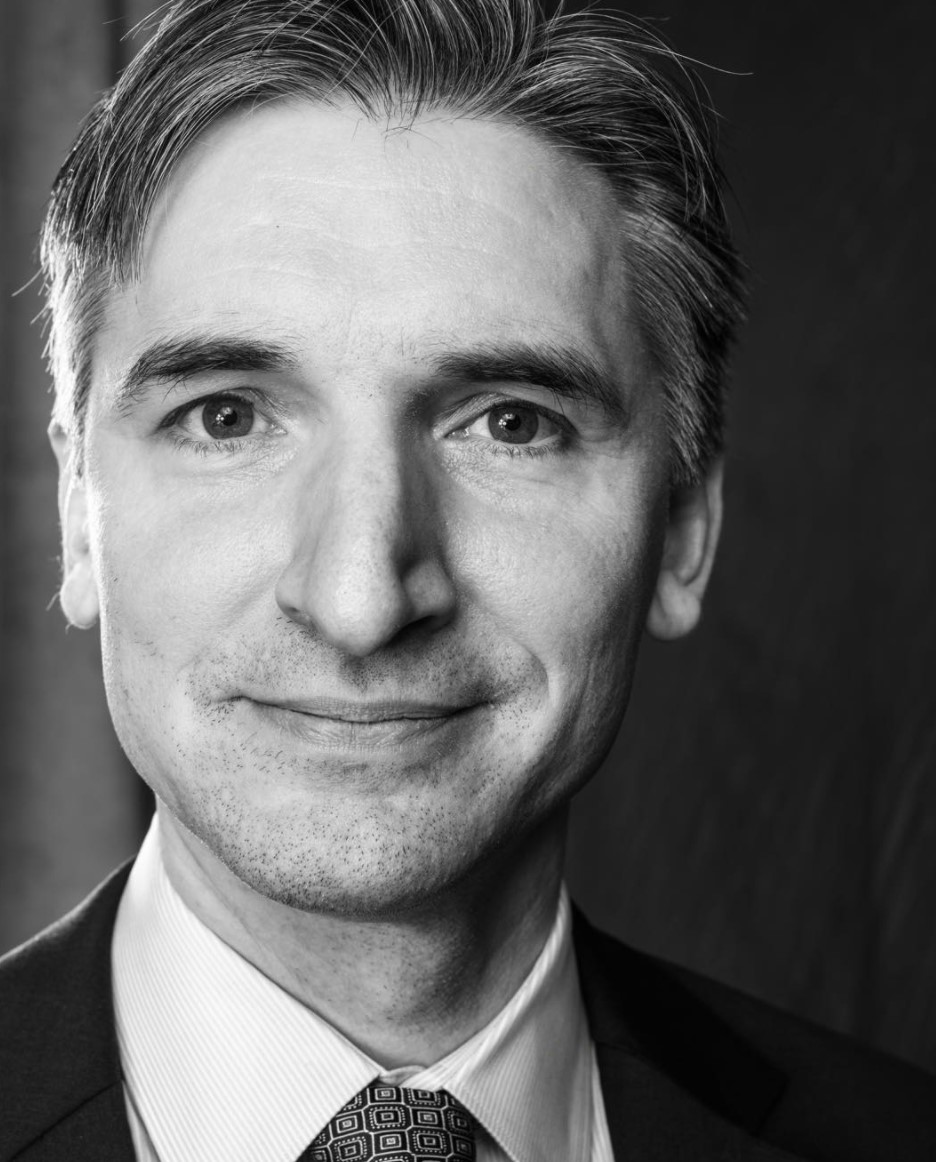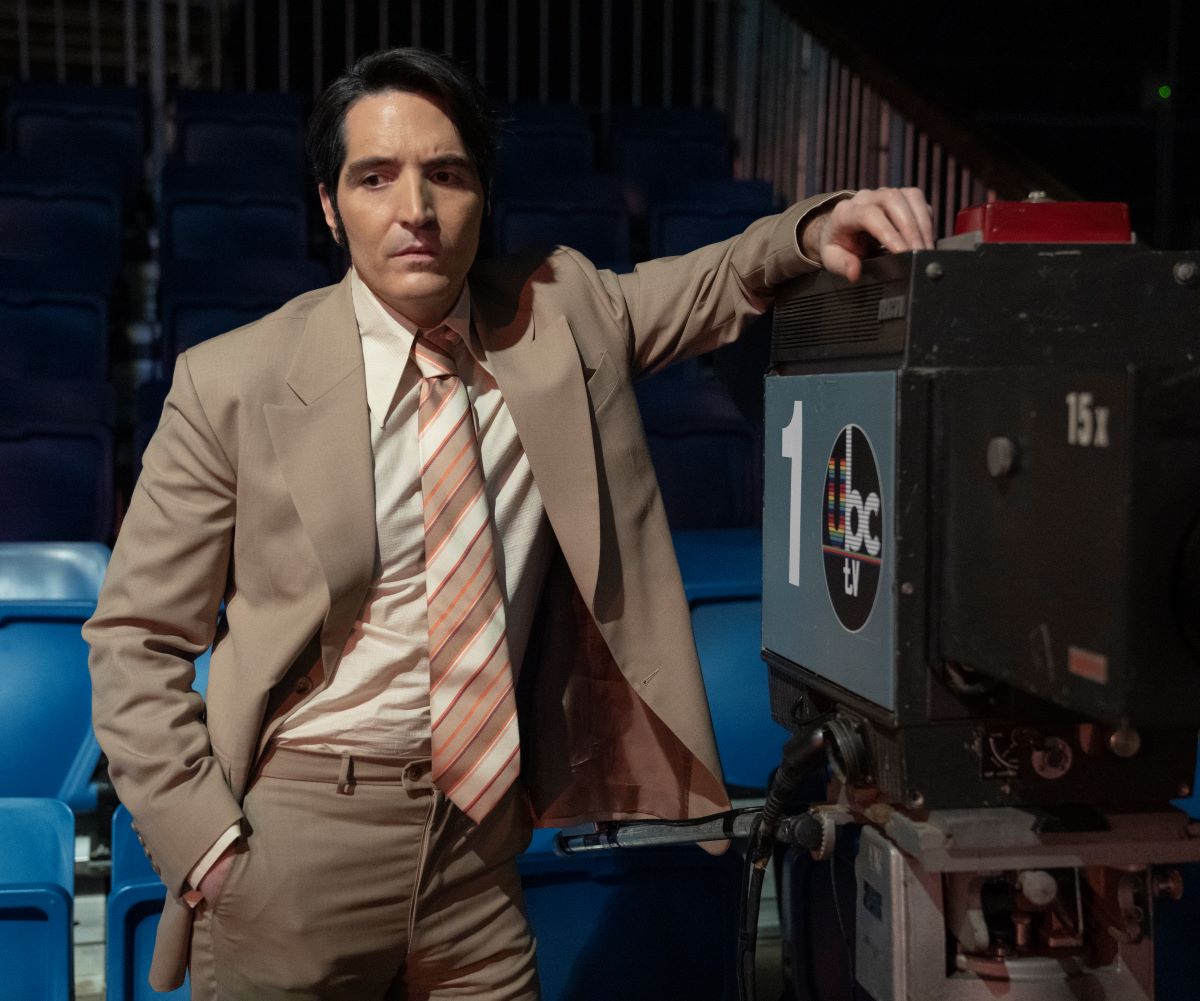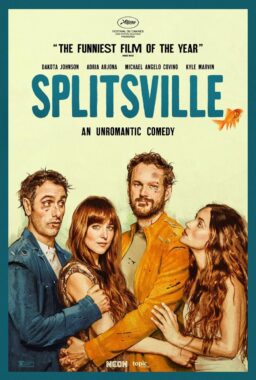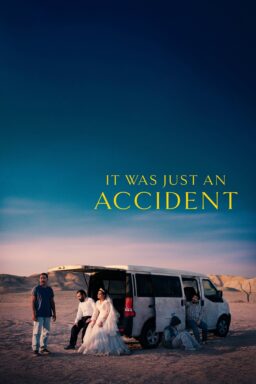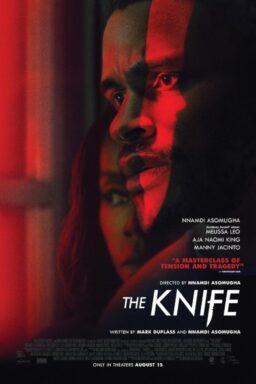In the unnerving new horror film “Late Night With the Devil,” a 1970s talk-show host named Jack Delroy is having a terrible evening. It’s Halloween, and he’s doing a live broadcast on the year’s spookiest night. His guests include a psychic, a parapsychologist and a young girl who may be possessed by a demon. Jack desperately needs a ratings bump—his numbers have dropped precipitously ever since the death of his beloved wife a year ago—and so he’s not above offering cheap thrills if it will bring in a big audience. Presented as a found-footage thriller—what happened that fateful night has supposedly never been seen since—“Late Night With the Devil” slowly ups the creepiness and scares, but the reason why we’re anxious from the first minute is because of who plays Jack.
For horror and genre fans in general, David Dastmalchian is like money in the bank. The 48-year-old actor has become a staple of cool Hollywood blockbusters and indelible low-budget indies. “The Dark Knight,” the Ant-Man films, “The Suicide Squad,” “Dune: Part One,” “Gotham”: He’s one of those character actors who makes everything better. And he’s especially attracted to fright films, appearing in everything from “The Boogeyman” to the forthcoming “The Life of Chuck,” written and directed by Mike Flanagan and based on Stephen King’s short story. With his striking look and eerily calm demeanor, Dastmalchian radiates unease—even when his characters smile, they chill your blood. You always assume whoever he’s playing is hiding something, and that’s especially true of Jack Delroy. As this movie’s long, horrifying night rolls along, we will learn about dark secrets in his past that may be contributing to the deadly vibes and strange supernatural occurrences.
“Late Night With the Devil” doesn’t just reconnect with him a genre he’s adored since childhood—it also finds him returning to indie films. Dastmalchian is a producer on the movie, which is written and directed by Colin Cairnes and Cameron Cairnes, and he excitedly tells me how much these sorts of so-called smaller projects mean to him. “I had an incredible collaborative relationship with Colin and Cameron, who are just so wonderful,” Dastmalchian says. “I said, ‘How often do you feel comfortable with me just allowing what I feel instinctually about what’s going on under the surface with Jack to maybe release a little air bubble that floats to the surface?’ And they said, ‘Whenever the impulse moves you.’”
Those bubbles surface frequently in “Late Night With the Devil,” with Dastmalchian balancing Jack’s desire to be a polished chat-show veteran with the encroaching darkness descending upon him. Death, destruction and exorcisms become part of the broadcast’s unexpected itinerary, and it’s all held together by Dastmalchian’s chilling turn. But horror isn’t just escapism for him. As he explains, horror has provided a bit of a lifeline, inspiring some of the most personal art he’s ever made. That includes his comic book Count Crowley: Reluctant Midnight Monster Hunter, which deals with depression and addiction, two things Dastmalchian has grappled with. (Even outside of the genre, he will sometimes draw from his own life, like with the 2014 drama “Animals,” which he wrote and stars in, a chronicle of a homeless couple battling heroin dependency. Dastmalchian himself was once homeless, living in his car for two years after school.)
Friendly and candid, Dastmalchian was more than happy to talk about his own past struggles, his difficult upbringing, mental health and his endless fascination with horror. And as someone who adores comic books, he also has some thoughts about how to combat the superhero-movie fatigue that’s currently plaguing Hollywood.
Some actors might think, “I’ve done enough horror movies, I don’t want to get typecast.” But as “Late Night With the Devil” makes plain, you seem to be constantly drawn back to this genre.
Oh, I’m so gratefully typecast. Here’s what I think my typecasting is: whatever the hell weird thing David Dastmalchian is going to do with this role. If it’s a comedic superhero sidekick or if it’s a troubled kidnapping victim or if it’s a mentally ill henchman to a supervillain, it’s all of this stuff.
I think back to my days in Chicago and being a theater actor, where the notion of typecasting sounded like an agent term or a casting-director term. For me as an actor, it’s like, “Oh, I got a role!”—I never feel like they are the same, I always feel like they’re different. And with horror, maybe I have an extra-special proclivity towards the genre, just because it’s something I’ve loved since I was a kid
I don’t understand—and I don’t really care—why certain genres are the recipients of an upturned nose when it comes to the artistry of cinema. It makes me sad, but it also makes me gloriously grateful that we’re living in a time when auteurs like Jordan Peele and [Robert] Eggers and even [Denis] Villeneuve are making films that dip into and explore that genre with such aplomb. Trust me, I’ve read some historical dramas—what would be considered high-end scripts with some pretty amazing attachments—that just are completely bland and boring to me. I would much rather take on an indie—what is, technically, a found-footage horror film like “Late Night With the Devil”—because it’s just so satisfying.
You grew up in a conservative, religious family. Where did this love of horror come from? Did anybody in your family dig horror?
No one in my family. I think [my love of horror] was a combination of a lot of factors. For whatever reason, since my earliest childhood memories, monsters, the darkness, shadows and all things creepy just called out to me. I don’t know why—it was just something I felt drawn to. The Vincent Price episode of “The Muppet Show” was immediately my favorite. Anytime that the Count was on “Sesame Street,” he was my favorite—“The Batty Bat” song and being in a spooky castle. So for whatever reason, that little thing was already like an antenna in my soul.
I was raised in a house that was religiously conservative and, therefore, horror films and also rock ‘n’ roll music were deemed pathways to evil and things that should be avoided. And I have that spirit in me, I guess, that when you try and lock a door, my instinct is to find a pick and get in there. I found a lot of the community that existed around the really conservative, restrictive, patriarchal kind of classic system of approaching life—riddled with shame and judgment—was frightening.
I’d be watching cartoons after school—I loved “G.I. Joe” and “Transformers” and “He-Man”—and there would be these ads for Crematia Mortem’s “Friday Nightmare.” Here’s this glorious, beautiful ghoul talking to the camera, just hypnotizing me. I used to sneak downstairs on Friday night, when everyone’s asleep, down into the basement where we had this big old console TV, and I would turn it on really quietly and get under a blanket, and I’d watch Crematia. She unlocked the door, and then she opened it for Oliver Reed in “Curse of the Werewolf” and Boris Karloff and Lon Chaney and Vincent Price and Christopher Lee and all of these heroes who I just was mesmerized by.

Some people get into art because they had parents who told them, “No.” It becomes a form of rebellion—or a sense of wanting something that’s yours and yours alone.
I think it’s important in storytelling, too—we want to try and show a perspective that hasn’t been viewed before, but without judgment. [Religious] people will tell you, “Oh, all are welcome,” but there’s this judgment: “You must change” or “You must repent” or “You must supplicate thyself for your brokenness.” In masterful storytelling—and even, sometimes, mediocre storytelling—it strikes something in us that makes us feel less alone and without judgment.
We are who we are—we’re whole, we’re complete. We all experience this fear of things that look different from us, things that speak differently from us, things that move differently from us, things that lurk in the shadows, things that are coming into our safe space. I think a lot of people would say, “Well, that justifies my hatred towards illegal immigrants. That justifies my hatred towards people who are expressing their identities differently than me, or expressing their sexuality differently than me, or expressing the way that they structure their lives differently than me.” I think, “No”—even as silly as this sounds, in a really well-executed horror film, we can achieve so much more important things than any of that bullshit.
Horror has a transgressive quality. For anyone who feels marginalized, horror can feel welcoming and all-inclusive.
Isn’t that wild? And what is it that we’re watching? People getting butchered, monsters ripping things apart. Whether it’s a horror comedy like “Shaun of the Dead” or a truly gruesome masterpiece like “Texas Chain Saw,” I always come back to this question: Why are we moths to the flame? What you just said is definitely one of the reasons, but the other is this deep, dark, subconscious fear that we all have of dying. And so, when we can sit with a group of people—either virtually, when we’re watching something online, or in the theater in the Church of the Cinema—it’s just such a great, cathartic experience to get scared together and then have those credits roll and remember, “We’re safe—we [can] get ice cream now.”
Is horror how you process what scares you in real life?
I am much more concerned about the reality that someone with a rapidly-firing, high-powered assault rifle could confront me than a werewolf showing up at my front door. But I can’t let my brain spend all day thinking about the fact that we live in such an incredibly upside-down reality that we even have to have that argument about weapons and public spaces and access to tools of death. What I can think about is reanimated dead tissue in Frankenstein’s monster. Is it a coping mechanism? Sure. Is it also a really wonderful way for my imagination to stretch out and find new tools for regulation as well as problem-solving? Absolutely.
If you ever get a chance to pick up my comic book, Count Crowley, [the main character Jerri Bartman] was a reluctant midnight monster hunter, then an amateur midnight monster hunter, now she’s a mediocre midnight monster hunter. She is someone wrestling with massive depression, anxiety, addiction and alcoholism, which are [the] Four Horsemen of my own apocalypse—those are the things that I have been struggling with since I was very young. Having Jerri do that as metaphor and, sometimes, on-the-nose confrontations with demonic beasts and necromantic enemies, it’s such a great place where I can safely tell stories—hopefully, people will listen to those stories and be entertained and have fun and enjoy the artistry while, at the same time, maybe feel a little less alone for a second.
Whether it’s Count Crowley or your 2014 film “Animals,” about homeless characters who are drug addicts, which you wrote, you’re revealing a lot of yourself. How much anxiety was there about showing your struggles to the world in such an honest way?
Massive, overwhelming, almost unbearable anxiety gripped me in the summer of 2013 as myself, my wife Eve [Leigh], my friend Collin [Schiffli], my friend Mary Pat [Bentel] and a whole micro-army of friends gathered around me for us to return to Chicago and make this movie “Animals,” which is a story about love and codependency, but told through the lens of homelessness and addiction, which is a subject very close to my reality. Even though I was not making a biographical film, there was not a page of that script that wasn’t dripping with the pollen of my life experience.
As we’re making the film, Mary Pat Bentel, my incredible producer, said to me, “You know, people are going to ask where this comes from. Are you prepared to talk about it?” I said, “Absolutely not. I don’t want anybody to know my past history as an addict. I’m afraid no one’s going to want to hire me in Hollywood. I’m afraid people are going to think differently of me.” And she said, “Okay, well, I think you’re pretty incredible, and I think you are making an important film here.” I had this similar conversation, and my wife Eve said to me, “It’s your decision. We will defend you no matter what. If you never want to tell anybody, we will even come up with bullshit just to tell the press. But just know that there is a chance that somebody out there could see this and see now how you are living a productive and serene, satisfying life, and maybe that could inspire them.”
So Nina Metz from the Chicago Tribune came to do a set visit one day [for] a little interview about, “Oh, you’re making a movie in Chicago.” We’re standing on the corner of Wilson and Magnolia in uptown, and she said, “So, where did the idea for this come from?” I just took a big deep breath and started talking about it, and I have never looked back since. The hundreds, if not thousands at this point, of people who have said, “Thank you for opening up and sharing—it’s really helped me feel a sense of optimism about something that I’m dealing with” has been incredible.
Also, I think this is a really important footnote: if you are struggling to get clean—or you are clean—you are under no obligation whatsoever to talk about it publicly. It is my journey. This doesn’t make me better than anybody else. Doesn’t make my sobriety journey any more meaningful. I just think it’s really important that people don’t ever feel pressured to talk about it. It’s why we keep it anonymous—that’s why it’s NA and A.A., et cetera. It’s just very important for people to feel safe, because there is a lot of stigma and there is a lot of shame. If you do feel so moved to [go public about it], though, just know that the experience for me has been very positive.

“Late Night With the Devil” tackles the exorcism genre, which has been a staple of horror for decades. For a lot of Catholics, “The Exorcist” is still the scariest movie ever. Because of your religious upbringing, does this genre especially resonate with you?
I think it’s this big full-circle moment. As a child, you’re ingrained with very binary, black-and-white principles of thinking good and evil, angel/devil, heaven/hell, reward/punishment—something like demonic possession is so terrifying to somebody in that religious space. The simplification of being able to say, “Do these things, then you are going to spend infinity in peace and bliss”—the thought that that could be threatened by something as utterly terrifying as the devil itself is just your worst nightmare. Combine that with the notions of religiosity, and it’s just like an omelet of terror for anybody in that space.
“The Exorcist” is so well-executed, by the way, it doesn’t matter if you were raised religious or not. I’m sure it scared the pants off of everybody but, boy, it really got me bad—I was raised with this idea of “Don’t open your mind to these things. Don’t watch scary movies. Don’t listen to rock ‘n’ roll music. Only watch things that are religious, only read things that are religious. Anything that is going to deviate from the path of purity is really only there to tempt you.” They’re so afraid of people living the full human experience because, the more people live the full human experience, the more they’ll question the authority and the power that’s been given to people who’ve been able to manipulate that power for thousands of years.
Going into a movie like “Late Night With the Devil,” I have processed a lot of that stuff, but it’s still there—it still lingers. That six-year-old in me that’s still scared by the notion that there is some fiery pit of despair with this malevolent intelligence trying to possess our souls probably added one extra drop of sweat on my forehead when we’re filming those really intense scenes.

I think the reason why horror frightens people in power is because these movies constantly suggest that the natural order can be thrown out of balance. Chaos reigns.
It’s fascinating: All of us, no matter what our persuasions are, gravitate towards comfort. It’s in our DNA. We want to be safe, we want to be comfortable. And one of the ways that people have crafted that kind of safety is through the rigidity of control or being controlled.
Horror does shine a light on this fact, and oftentimes it’s a great metaphor for the powers that do control us and abuse us. I’m on a long journey of psychological wellness and therapeutic healing—as I wish everyone would be—but in spite of all of the anxiety and terror I [feel] over what’s happened in our world, I still think sometimes the things that scare me the most lurk within myself. That’s what’s going on with Jack Delroy—as scary as the events are that are taking place in the 1970s and the fact that the love of his life has died tragically, he’s most afraid of what lurks within. I think I am, too, and that’s hard to rectify.
A movie like “Misery,” [what] we all fail to fully acknowledge, because it’s too unsettling, isn’t that we’re afraid some stalker is going to become obsessed with us and ruin our lives and snap our ankles in half—it’s that we have the potential to become obsessed with things, ideas, people, to the point that we lose ourselves in them. I’ve always felt that was the scariest thing about Kathy Bates’ performance—not that she was the wolf on the outside of town, but that she was the monster that lurks within everyone.
You’re a self-proclaimed comic book nerd, and you’ve been in superhero movies. That genre has gone through a rough period of late—so much so that there’s conversation in the industry that there’s superhero movie fatigue. What do you think can be done to fix that?
I, first and foremost, don’t believe there is such a thing as superhero fatigue. There is such a thing as not-incredibly-well-executed-movie fatigue, and I think that needs to be acknowledged.
Let’s look at the facts: Comic books have been in print and picked up on a monthly basis by legions of readers and fans for almost 100 years. Publishers, if you look historically, have gone through difficult, sluggish sales times when you could say those were not great runs—maybe the art and the writing was not the caliber that it was in the five years preceding that when such-and-such team was writing this series. So, to me, it’s about getting the right filmmakers paired with the right projects, giving them the time and the support and the resources that they need to make the films that they need to make. And then [it’s] understanding that the path to exceptional storytelling—if anyone’s brave enough to do this—is eliminating all of the middleman-muckying that happens when corporate executives, agents and business people are pulling the levers on the creative process.
That someone like James Gunn is going to be making a Superman film is such good news for all of us who know and believe that there is no such thing as superhero fatigue. James Gunn is the head of a studio, so he’s going to be able to get the support that he needs to make sure that he has the time—to make sure that he has the resources—to make the film that we all are dying to see. I’m optimistic about it.
Is there sci-fi fatigue? Is there horror fatigue? No. We go through dips and lulls and peaks and valleys. As soon as a particular type of burger broke the bank on Wall Street, all of a sudden every other chain was trying to replicate that exact same burger and churn it out faster and more furiously than anybody else. We can’t look at movies like motherfucking burgers! They’re not goddamn burgers—they’re fucking movies!
Little kids go with their hearts and their minds open, excited to sit in the magical palace of the cinema and be transported somewhere—kids know, down in their bones, when they’re being shown a commercial. You remember, as a kid, the difference between certain cartoons that were absolutely commercials and the ones that were really fun, transportive stories about people on adventures and going through all the Joseph Campbell magic of storytelling. There’s a difference, and we know it.
